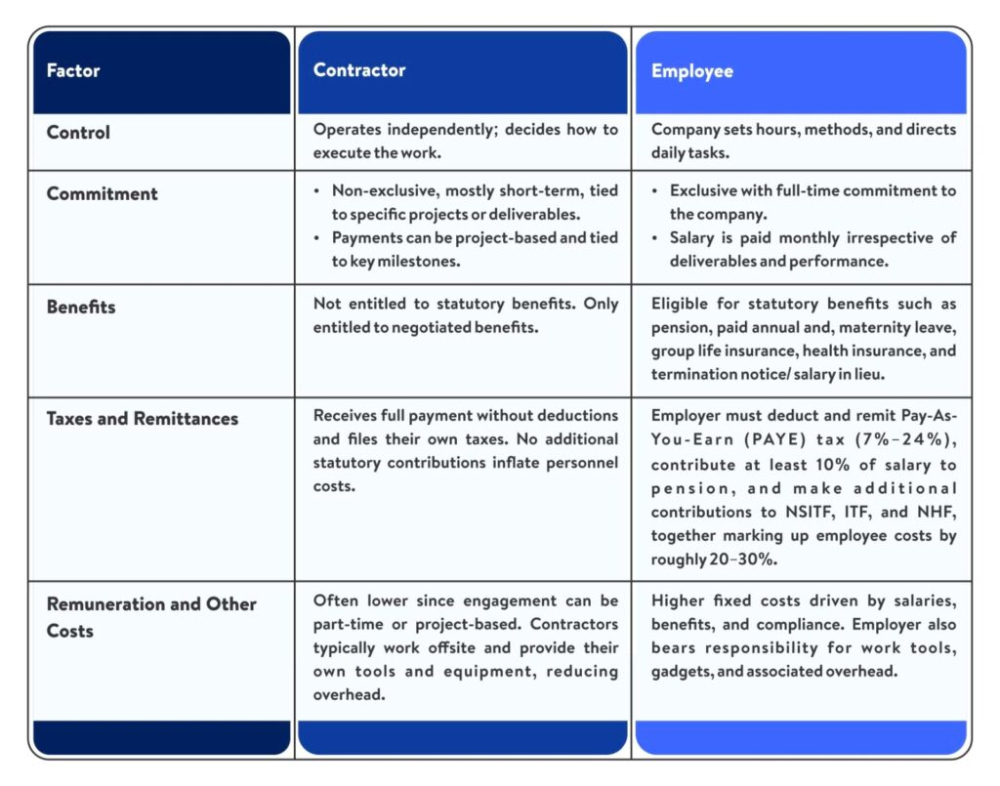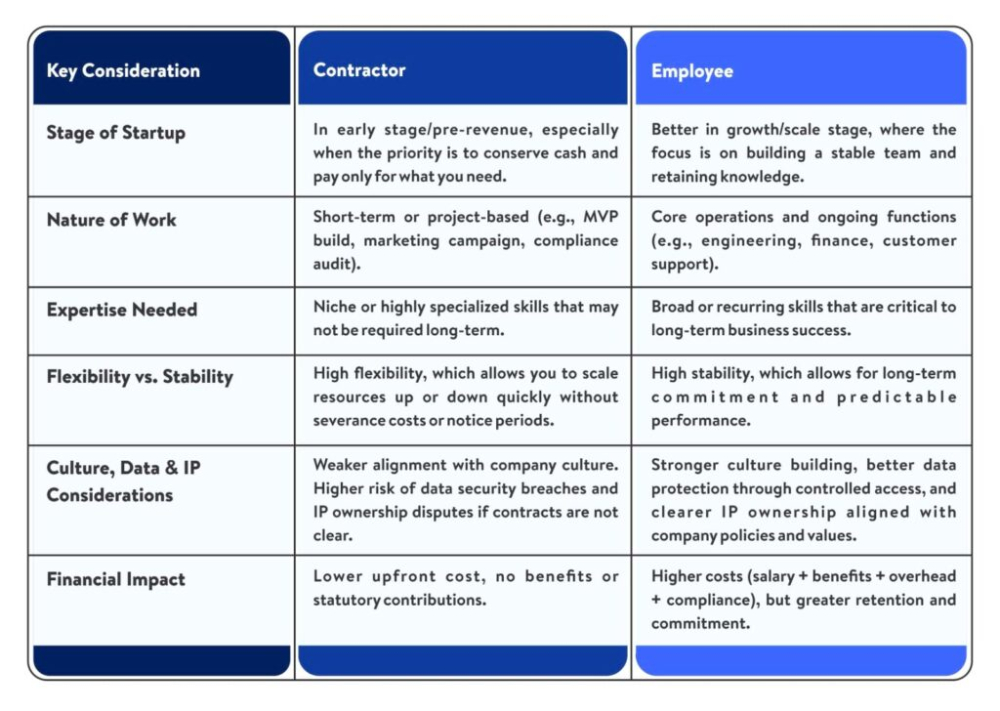- within Employment and HR topic(s)
- in United States
- within Employment and HR, Insurance and Technology topic(s)
Introduction
For most startups, survival hinges on one thing: how well resources are managed. In the race to cut costs and scale smartly, staffing becomes both a founder's greatest strength and toughest challenge.
The dilemma is clear: people are your biggest asset and your biggest cost. Do you hire full-time employees who grow with the company or bring in contractors for flexibility? What seems like a simple cost choice actually carries legal, financial, and strategic implications that can define your company's future.
In this edition of Tech Brief by TALP, we unpack the contractor vs. employee dilemma, outlining key factors every founder should weigh before making the call.
Contractor v. Employee: The Key Differences
Think of an independent contractor as a specialist you engage for a defined task or project. They work with multiple clients, manage their own schedules, and choose how the job gets done. Your role as founder is limited to defining the scope and deadlines, not managing their day-to-day. An employee, on the other hand, becomes part of your company's structure. You decide how, when, and where their work is performed. In exchange, they are entitled to ongoing pay, statutory benefits, and legal protections.
Here is how the two models compare:

Strategic Implications: When Each Model Makes Sense
A purely contractor or purely employee model rarely works for startups. Contractors give you reduced cost, flexibility, and access to global/niche talent, which is ideal for short-term projects, sprints, or highly specialized tasks. Employees provide continuity, culture, and long-term ownership, which is essential for sustainability once your startup is ready to scale. The smartest founders build a hybrid model, leveraging contractors for agility while gradually building a core employee base as the company stabilizes.
The risks lie at the extremes. Rely too heavily on contractors, and you risk losing institutional knowledge, weakening company culture, and facing compliance challenges if they are, in fact, treated like employees. On the other hand, hiring too many employees too early can quickly inflate costs, drain runway, and force difficult layoffs if revenue or funding doesn't keep pace. The solution is sequencing. Start lean with contractors to remain agile, then transition into strategic employee hires for roles that are central to growth and culture.
To help you visualize the trade-offs, here is a side-by-side snapshot of when each model makes sense:

The Thin Line
A common startup shortcut is to call someone a "contractor" while treating them like a full-time employee with the same hours, reporting, and control without the benefits or compliance costs. Clever? Not really. Under the law, labels don't matter, substance does. If it walks and quacks like employment, regulators (and courts) will treat it as employment.
In cases like Mr. Emmanuel Eshebrinama v God is Good Motors (Unreported Suit No. NICN/LA/225/2019), courts have gone beyond the contract to ask:
- Who controls the person's time and work?
- Are they integral to daily operations?
- Do they carry official titles?
If the answers lean toward employment, then that "contractor" is legally an employee. In which case, taxes, pensions, and social contributions that were not remitted become payable in arrears. It gets even more complex when workers themselves push for recognition as employees, as seen in the class action involving Oladapo Olatunji and Daniel John v. Uber Technologies System Nigeria Limited, Uber B, and Taxify Technology Nigeria Limited, Uber.
This risk isn't unique to Nigeria. In the U.S., the IRS uses a "control test" to determine whether someone is truly a contractor or an employee. Likewise, EU employment law closely examines the level of control and integration into the business when making the same distinction.
Conclusion
Cutting costs is important, but trying to outsmart the law is a dangerous game. If you are unsure whether to engage talent as contractors or employees, get proper legal advice upfront. It is a lot cheaper than fighting it out in court later.
We would love to hear from you. How has your startup approached the contractor vs. employee dilemma?
To view original Tope Adebayo article, please click here.
The content of this article is intended to provide a general guide to the subject matter. Specialist advice should be sought about your specific circumstances.





